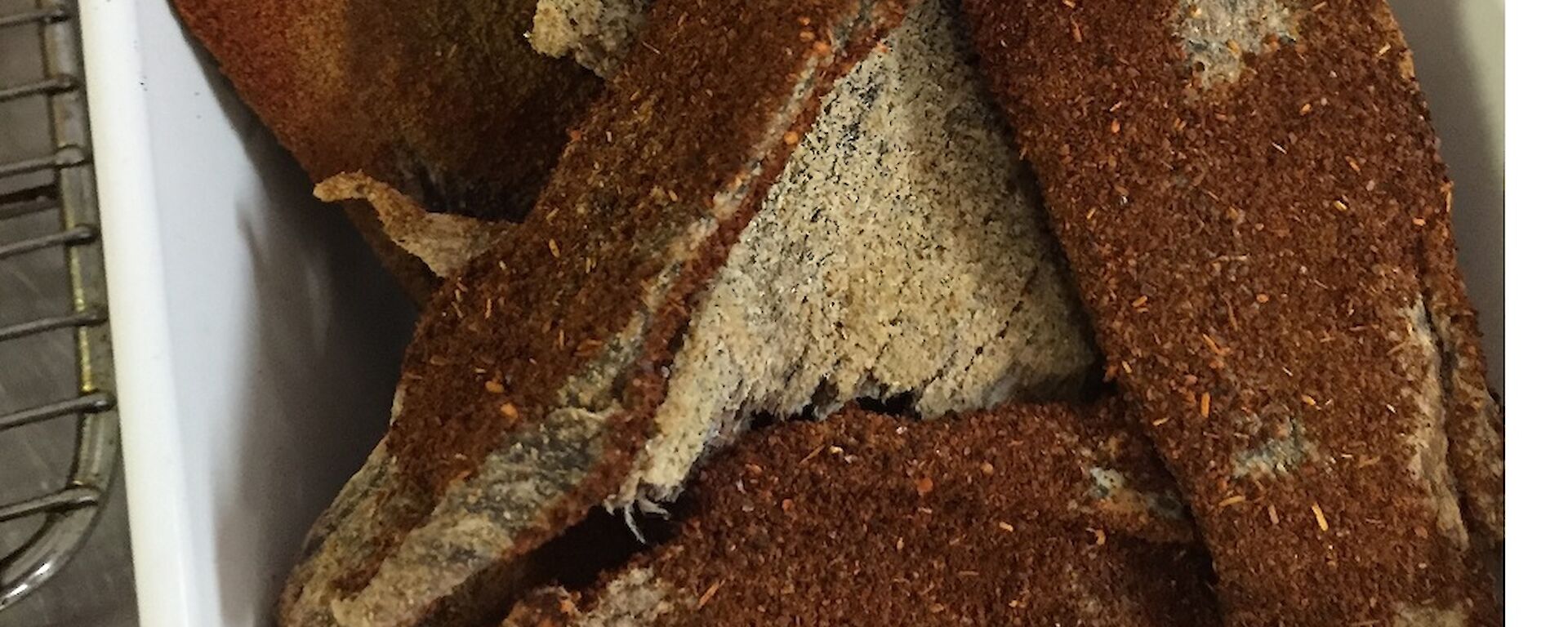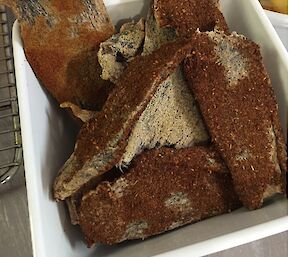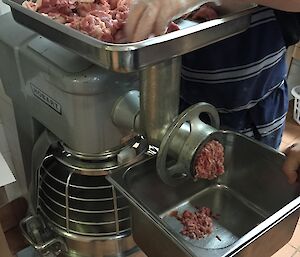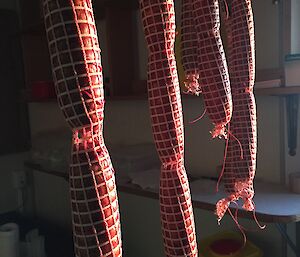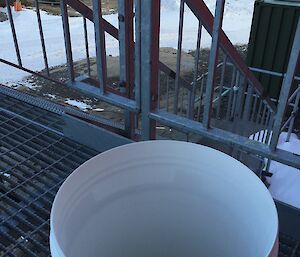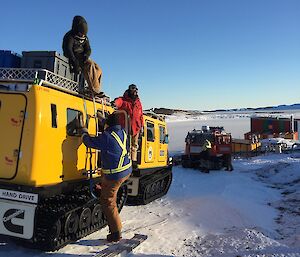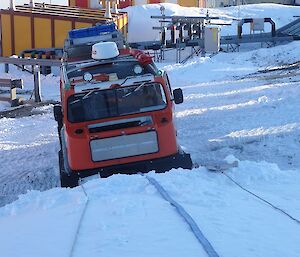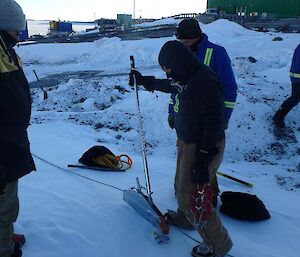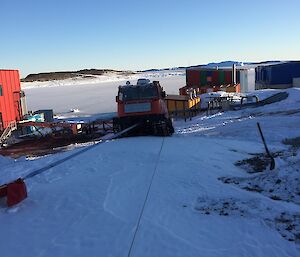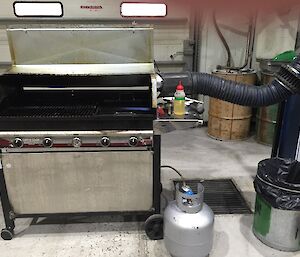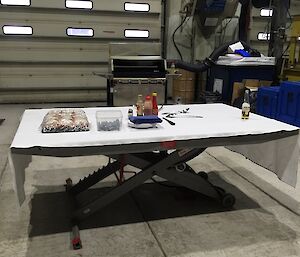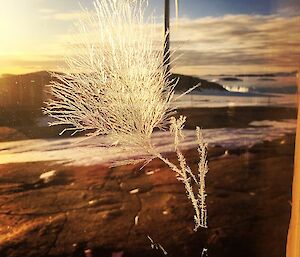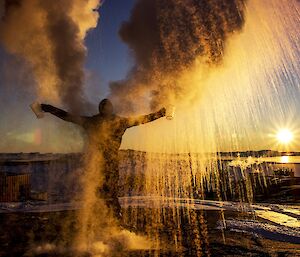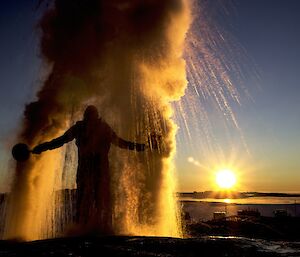On Saturday four Mawsonites sharpened our knives and put on our aprons ready to learn some charcuterie skills. Charcuterie refers to cold meats and as it is midwinter in only a few weeks, we decided that it might be nice to try and make our own salami, bacon and ham for brunch.
We defrosted a pig from our generous freezer and Gav instructed us on which bits were the hams, the bacon and the shoulder. It is more difficult than it looks to make the cuts look neat and not end up with a mashed up piece of meat that looks like it should be in a casserole!
The hams were ready first and since the brine was still a bit hot we placed it out the back door in the −20° temps to cool off a bit before soaking the hams for four to five days.
While we waited for the brine to cool we rubbed some spices onto the beef biltong that had been prepared the night before and set it to dry.
The pork belly (a.k.a. nearly bacon) was next. These were placed into a salt rub with Jose choosing the spicy option and Shane going more traditional. Hopefully by brunch this weekend we will have home made bacon to eat!
Finally we minced the shoulders and some belly fat to make the base of our salami. Red wine, tomato paste, herbs and spices, and a good mix, and we were ready to stuff the skins and wait anxiously for six weeks or so to see if we were successful.
The main worry is with lack of humidity in Antarctica. Salami usually likes a nice humid, cool environment to mature in but with humidity around 1% there is a chance it will just dry out and we will end up with jerky instead of salami! We have put a little humidifier under the salami sticks to try and prevent this happening, and after the first four days it’s looking good so far.

